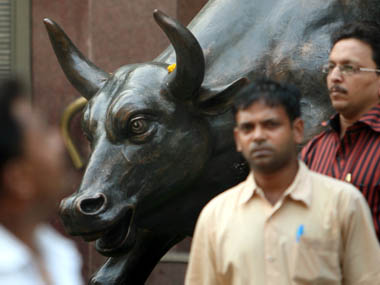by Senthil Chengalvarayan
The markets are up, the rupee has rallied and inflation is down, what a terrible place to be in with just a month to go before the budget.
Yes, last month was the best January for the Sensex in 18 years, since 1994. And yes that does call for a toast, because even if you didn’t invest in the rally to make fresh money, your portfolio must be up, so let’s say cheers to that.
But after raising your glass, draining it and putting it down, you may need to start worrying again, because what this rally could do, coming as it does after we have had various Corporate Gurus telling us that, “7% growth is a great place to be at”, is to raise complacency levels in Delhi. And that is a horrible thing to happen at a time when the finance ministry and the PMO battle to convince 10 Janpath that a restrained budget is the need of the year. What they could so imperiously be told now is to stop being such boring bean counters and to get on with the business of investing our tax money for their votes, because “hey things are clearly not as bad as economic advisors and the RBI governors seem to think.”
But if anyone is listening do consider these numbers:
[caption id=“attachment_201091” align=“alignleft” width=“380” caption=“We weren’t the only markets to rally in January, the Dow and the S&P had their best January’s in 15 years, since 1997 and the younger Nasdaq saw it’s best year opening rally since 2001.Reuters”]  [/caption]
We weren’t the only markets to rally in January, the Dow and the S&P had their best January’s in 15 years, since 1997 and the younger Nasdaq saw its best year opening rally since 2001. Admittedly none of these indices shot up anywhere near as much as the 11 odd percent that the Indian markets did, the Dow and the S&P were up about 4%, and the Nasdaq was up 8%. Closer home the S Korean Markets and Hong Kong were up over 7%, Egypt though was up 26%. The point is that there was liquidity sloshing around global markets in January and a lot of it landed in India - FIIs pumped in over $2 billion into our markets - tempted no doubt by beaten down share prices and the weak rupee.
But now as valuations have climbed and the rupee has strengthened they are going to be looking at other things more carefully, particularly at the big numbers. So here are some of those numbers, and let me warn you they don’t present a pretty picture.
The April-December fiscal deficit numbers are out and we are already at 92 per cent of what was estimated in the budget last year, the average for this time of the year is 64%, so we are already in very dangerous territory. And if you consider that the current run rate of tax revenue is 7.5% versus a budgetary estimate of 17.9%, while expenditure is shooting up at 13.9% against the budgetary estimate of 3.4%, we are clearly going to be hugely out of whack. I am not going to guess what the final deficit number to be announced in the budget will be, because that will also be a factor of how much of the accounting for oil subsidy will be deferred to 2012, or how much the divestment shortfall will be cushioned, but it’s going to be way above the proposed path of 4.6% in 2012 and 4.1% in 2013. But of course Investors have factored that in.
So while it is tempting to point at our performance and say that when a “risk on trade” rally is underway an investor has already taken our poor macro numbers into account and thinks we are still worth the risk lets not forget that the universe of “Risk on markets”, markets outside the US that investors look at when they are in the mood for a bit of calculated flutter, has gotten bigger. It now includes the beaten down European markets, so some of the money that would have only gone to emerging markets in the past could well be finding allocations in Europe. And also let’s not forget the best days in January for the Indian markets were the last ten, that’s when the Chinese markets were closed for the Chinese New Year, and as they open they will be doing a lot of catching up as well.
So the Indian markets could well have seen the last of the big flood of value driven liquidity. From here on wise money is likely to be looking at the budget for further direction. And what they will be watching out for is, to quote Citi Economist Rohini Malkani’s latest Macro Economic Flash is “(a) Fiscal consolidation - revenue raising and subsidy containment and (b) structural reforms, particularly in the infra/agri space”.
So don’t loosen those purse strings just yet, with two years, hopefully to go for the next general elections, good economics as a former finance minister said could just well turn out to be good politics and work for everyone in the long run.
Senthil Chengalvarayan is President & Editorial Director of TV18 Business Media. Network18 owns Firstpost.


)
)
)
)
)
)
)
)
)



